|
The
Tudor Cinema
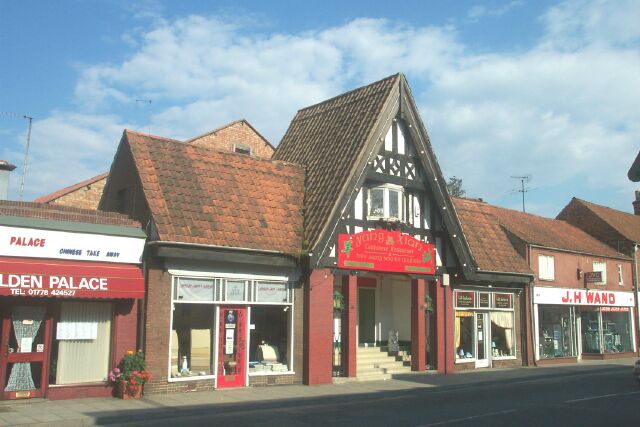
Moving pictures
came to Bourne in 1925 when shows were staged at the Corn Exchange. Posters were carried by local newspapers advertising films on February 19th including a feature about George V called Long Live the King
and an animated cartoon called Felix the Cat.
The first shows were such a success that the hall became a regular venue for further film shows on three nights a week, using a portable screen and primitive projection equipment that was either housed in a movable corrugated iron
shed or sited outside the building from where the film was projected in through the window. These precautions were necessary because the nitrate-based 35 mm film used was highly inflammable and there had been many serious fires caused by careless operators in other parts of the country although it remained in general use until a safety film was developed in 1951.
The film shows at the Corn Exchange were so successful that a permanent cinema for the town became a viable business proposition and in 1929, the Tudor Cinema was opened in North Street, built on the site of two cottages with dormer windows. The old roof line can still be seen on an adjoining building to the north. The designer was Mr A J Thraves of Nottingham who followed the tradition for cinemas of the period by adopting a flamboyant style, in this case mock Tudor with a distinctive A-shaped gable and a half-timbered frontage.
The owners were a company called Bourne Picturehouse Ltd whose registered address was in North Street at the offices of local solicitors Andrews, Stanton and Ringrose. It seems certain that salvaged materials such as bricks, timber and pantiles from the demolished cottages, were used in the construction and the front section also included two lock-up shops on either side of the entrance which were let out to local retailers as an additional income. The auditorium had room for 588 patrons and also included an orchestra pit for the pianist who accompanied the silent films of the day. The opening date was December 2nd when the first three nights were devoted to a screening of the silent film The Sea Beast, a 1925 adaptation of Herman Melville's famous whaling novel Moby Dick, starring Lionel Barrymore and Dolores Costello. Admission prices were 1s. 3d., 1s., 9d. and 6d. in the pre-decimal days when £1 = 240 pence.
The cinema continued showing silent films with a piano accompaniment until the talkies arrived in 1931. On Monday 21st September, queues formed down North Street to experience the wonder of the age when
The Jazz Singer, starring the vocalist Al Jolson, made in 1927 and containing the first spoken words on screen, was shown to an astounded public and so a new age of cinema buffs became addicted to the silver screen. The cinema was never short of patrons and the entertainment continued throughout the Second World War from 1939-45, usually with twice-weekly performances of different films, from Monday to Wednesday and from Thursday to Saturday, when the programmes included regular newsreels showing the progress of the Allied armies on all fronts, one of the most popular features of the cinemas during this period of our history.
When the war ended, Bourne Picturehouse Ltd sold the Tudor to the Star Group who re-quipped it in 1946. New projection equipment was installed together with a brilliantly illuminated screen, the orchestra pit was declared redundant and removed, new seating and carpets were fitted and the auditorium redecorated, reflecting the Tudor theme of the frontage with heraldic shields emblazoned on the side walls and the imitation cast iron Tudor roses on the front façade were given a coating of gold paint. The now "deluxe" cinema also had a new name: the Tudor Super Cinema and it was given a grand re-opening on Monday 9th September 1946 with the film The Valley of Decision starring Greer Garson, Gregory Peck and Lionel Barrymore, playing for the first three days of the week followed by the Technicolor musical State Fair starring Jeanne Crain and Dana Andrews from Thursday until Saturday.
Wide screen entertainment such as Cinemascope and Panavision started to attract filmgoers to nearby towns after it was introduced in 1953 and this signalled the death knell for those rural and back street cinemas that were either too small to install such facilities or could not afford them. The increase in car ownership provided more convenient travel facilities and this exacerbated the problem and attendances at the Tudor started to decline and closure appeared inevitable but it came slowly. On Wednesday 14th August 1963, the Star Bingo and Social Club was opened on the premises for three evenings a week and films were restricted to the other three available evenings but they too ended in May 1972 when the building was sold to Silverline Entertainments Ltd who planned to use it entirely for bingo sessions, a gambling craze that was by then sweeping the nation.
The end of the cinema was a loss to Bourne and film fans wanted it retained, particularly the younger generation, and pupils from Bourne Secondary School (now the Robert Manning College) raised a petition with 330 signatures in an attempt to keep it going. The new owners were only partly persuaded by this enthusiasm and as Sunday showings had by then been legalised, they agreed to screen films on that day and on Mondays but it did not prove to be economic and the idea was short-lived. Apart from a few Saturday morning matinees in the early months of 1974, the projection equipment therefore stood unused and deteriorating for the next three years, the first time it had been idle since being installed in 1946.
After 16 years, bingo too suffered a decline and the sessions were eventually subsidised by family entertainments on Friday and Saturday evenings and country and western on Sundays. But that too was a failing market and the Tudor was eventually put up for sale in the summer of 1989 with a price tag of
£165,000 and in May 1991 it re-opened as a Chinese restaurant, dishing up portions of chop suey and fried rice instead of a feast of Clark Gable and Jean Harlow.
|
PICTURE GALLERY |
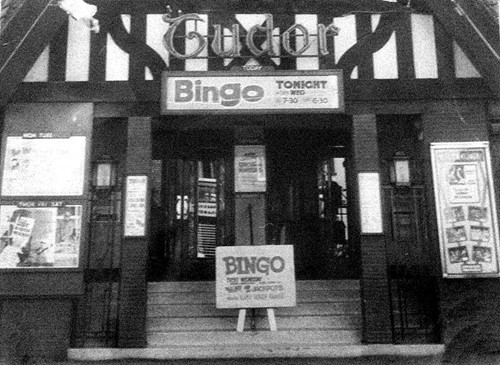 |
|
The end of the Tudor as a full time cinema came
when bingo was introduced in 1963 during the managership of Geoffrey
Beddow from 1961-70. |
|
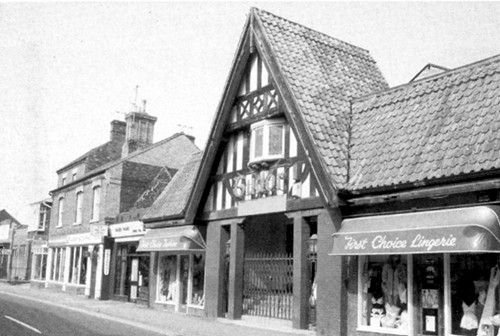 |
|
When the Tudor Cinema finally closed in 1989, the
sign that had blinked a welcome to film fans for sixty years was rescued
and repaired by local conservationist Jonathan Smith who has retained it to this day
as a reminder of the time when a visit to the pictures was the
highlight of the week for many people. |
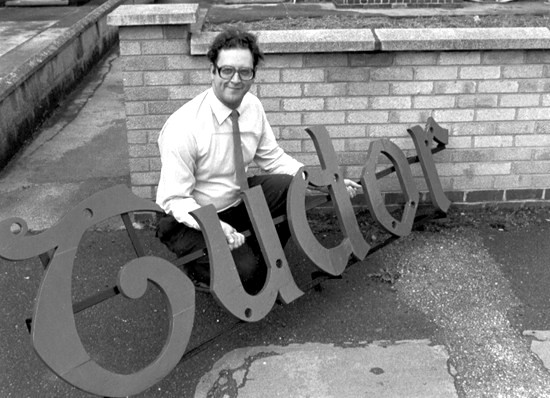 |
|
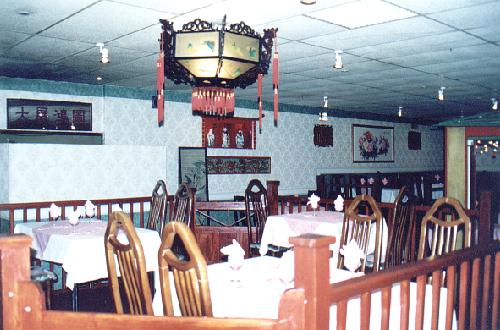 |
|
The interior of the Tudor Cinema with a lowered ceiling after being
converted for use as a Chinese restaurant.
|
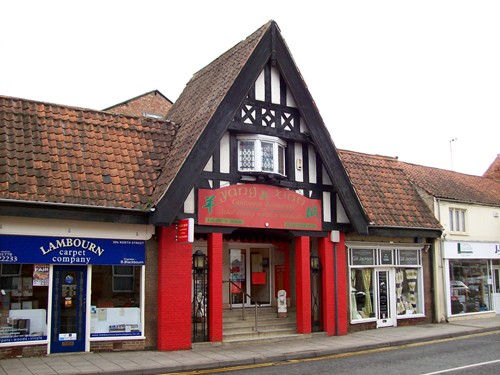 |
|
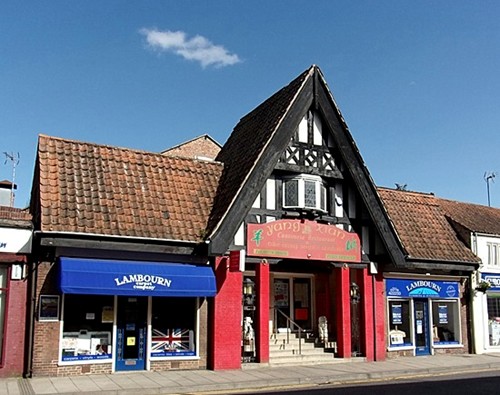 |
|
THE TOWN'S SECOND CINEMA |
|
In April 1977, the equipment from the Tudor was purchased by two local film enthusiasts, Jeremy Perkins, a former projectionist, and Robert Edwards, who formed the Bourne and District Film Society. They installed it in a converted warehouse in Burghley Street and called it the Bourne Film Theatre where they remained for several years before moving to new premises behind North Street. This was an intimate 55-seat cinema that gave pleasure to many people for the next few years, staffed entirely by Mr Perkins and his wife Jane. The project was run as a film society with 11 members paying £10 a year to keep it solvent and it managed to screen the latest films within a few months of their release. Although it was able to cater for 330 patrons a week, the cinema rarely had a full house and one evening it closed because no one turned up. Nevertheless, it was popular and continued to operate until the lease expired in November 1990 when that too closed down and Bourne has had no cinema since. |
See also
Jeremy Perkins
Memories of our own railway children

Go to:
Main Index Villages
Index
|





